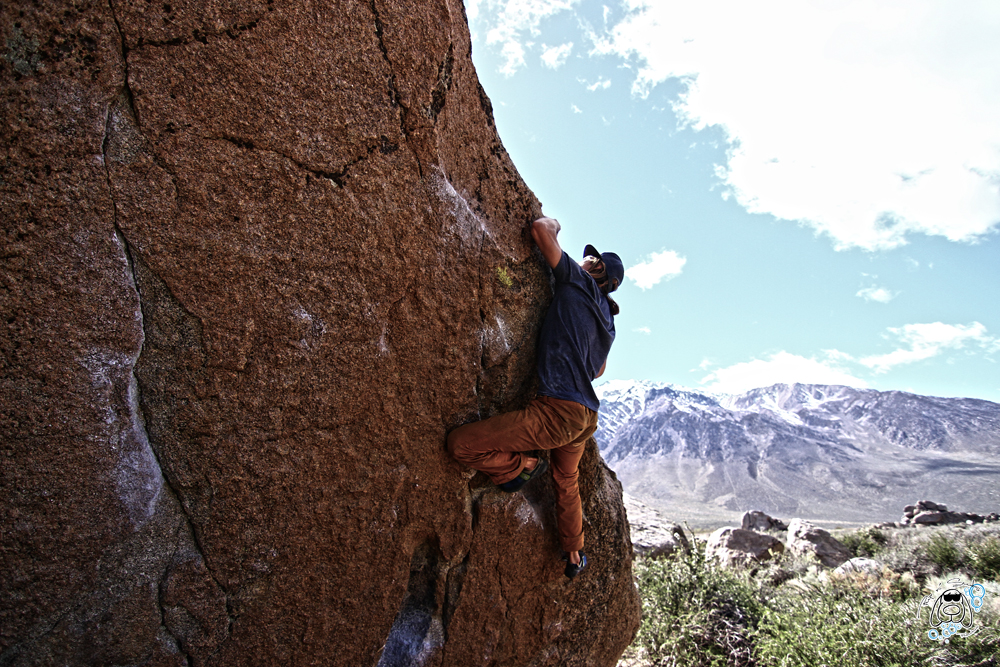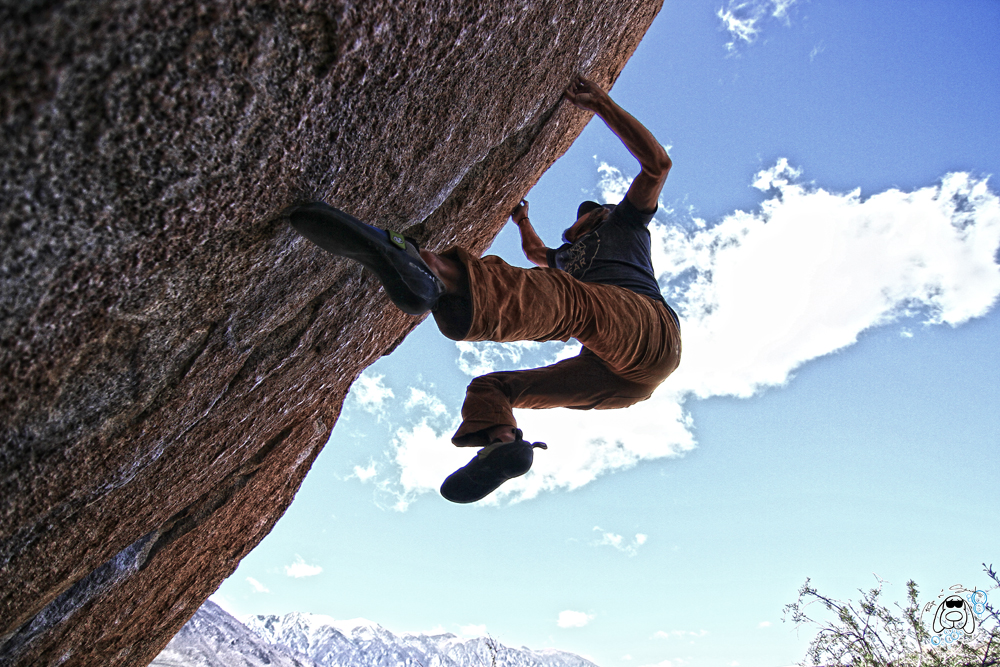You’ve done your training, and you’re ready for it to pay off. You’ve spent two months locked in the gym training everything, and now you want to see the pay off to your outdoor climbing goals. You have picked your project, tried it a few times, and are starting to feel like it may go. You cruise up through to the crux, only to forget if you move your left foot before your right hand or if you bump your hand first then move the foot.
You hesitate.
Weighing the options for what feels like three minutes, but in actuality is three seconds, you start to get pumped and decide to go for it … only to slip off because you forgot the beta. How could you stop this from happening? Visualization.

All photos: Colby Elliot, Pup N’ Suds Productions
What is visualization?
Visualization is the process of building up a mental image.
For climbers, it means building up the mental image of you climbing your project from the ground to the top in a successful manner (success being your personal goal).
Visualization is a meditation practice that has been around since the dawn of humankind. This process has been used by countless other athletes in a variety of disciplines before climbing. Famous studies conducted through scientific research of rock climbers, performance musicians, and artists have shown that when people visualized the intended outcome they saw 30% more success than those who did not. Another study concluded that a group who practiced mental training of finger and elbow exercises saw a strength increase of 35% (finger abduction) and 13.5% (elbow flexion) through the use of mental exercises over the course of 12 weeks.
What does that mean for us rock climbers? It means that you can send your climbing project or reach a high-point goal sooner rather than later through the use of visualization.
How does it work?
Introducing: mirror neurons. Mirror neurons are synaptic firings that happen in your brain when you see others do something.
Have you ever-watched Food Network and felt hungry by the end of a show? The same neurons that fire off when you drink water also fire off when you watch someone else drink water. Test it now; watch someone for an extended amount of time drink water without reaching for a glass yourself.
Mirror neurons are essentially our monkey see-monkey do response. When you break it down, the neurons you use when visualizing yourself doing a climb are the same neurons that fire off when you are actually climbing it in reality. Thus, the more you visualize a specific move or route, the better engrained it becomes in your mind. You begin to know secondhand all of the moves at each specific point on the climb. As you increase the amount you visualize, you increase your odds of doing the motions of your visualization in real life. It creates a thicker network in your brain and pathway, so by the time you go to actually climb the route, it’s as if you have already sent it before.

How do you visualize?
There are many methods for visualization, but the more techniques you become acquainted with, the greater success you will see. For now I’ll describe one method for you: associated visualization.
Associated visualization is when you visualize yourself in a first person perspective, through your own eyes. Start by closing your eyes and taking a few deep breaths. The more detailed you make your visualization, the better; it’s like a mental map to your goal. The more you can outline, the more you will remember and utilize in the moment on the route. It is important to be as detailed as possible.
Start with visualizing tying in and any pre-climb rituals you do. Once you start climbing in your visualization, focus on each move, but not just the macro movement, visualize the micro beta—the details.
Related: How to Use Micro and Macro Beta to Project a Climb
Visualize how the holds actually feel, as well as which hands and feet go to them. Visualize your breathing (proper breathing) and your feelings; work to affect any nerves in your climbing positively while visualizing.
Visualization also offers you a chance to break mental habits that we tend to get wrapped up in, to practice mentally not being scared of falling at the crux, and and to see yourself successfully do the crux moves.
As you visualize, continue to breathe, creating the image of what each hold feels like and making a mental note of where to put each foot and hand. It will take some time, but visualize yourself climbing successfully from the ground up to your goal as much as possible. Breaking up the visualization won’t be as useful, but if the climb is long, breaking it into parts can be a good start.
The more you prepare yourself (visualize), the better off you will be and more often than not you will reach your goal.
Further reading
- 10 Reasons Why Every Climber Should Meditate
- eBook — Modern Redpointing: Alternative Strategies to Improve Your Performance
- Mastering the Mind: An Interview with Mental Training Specialist, Paul Roberts
- How to Avoid and Manage Getting Pumped
- Everything I Learned about Redpointing I Learned from Super Mario Brothers







